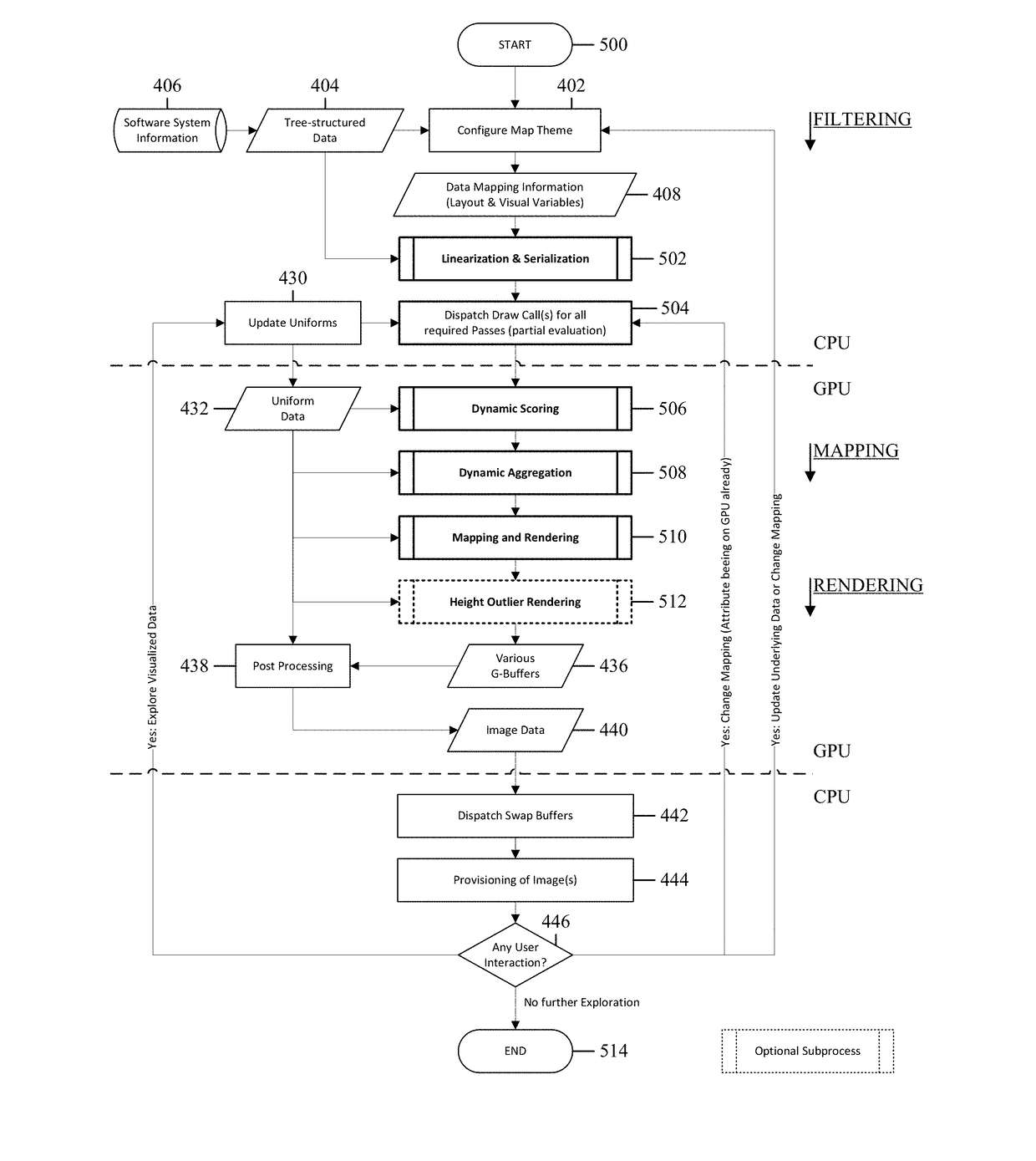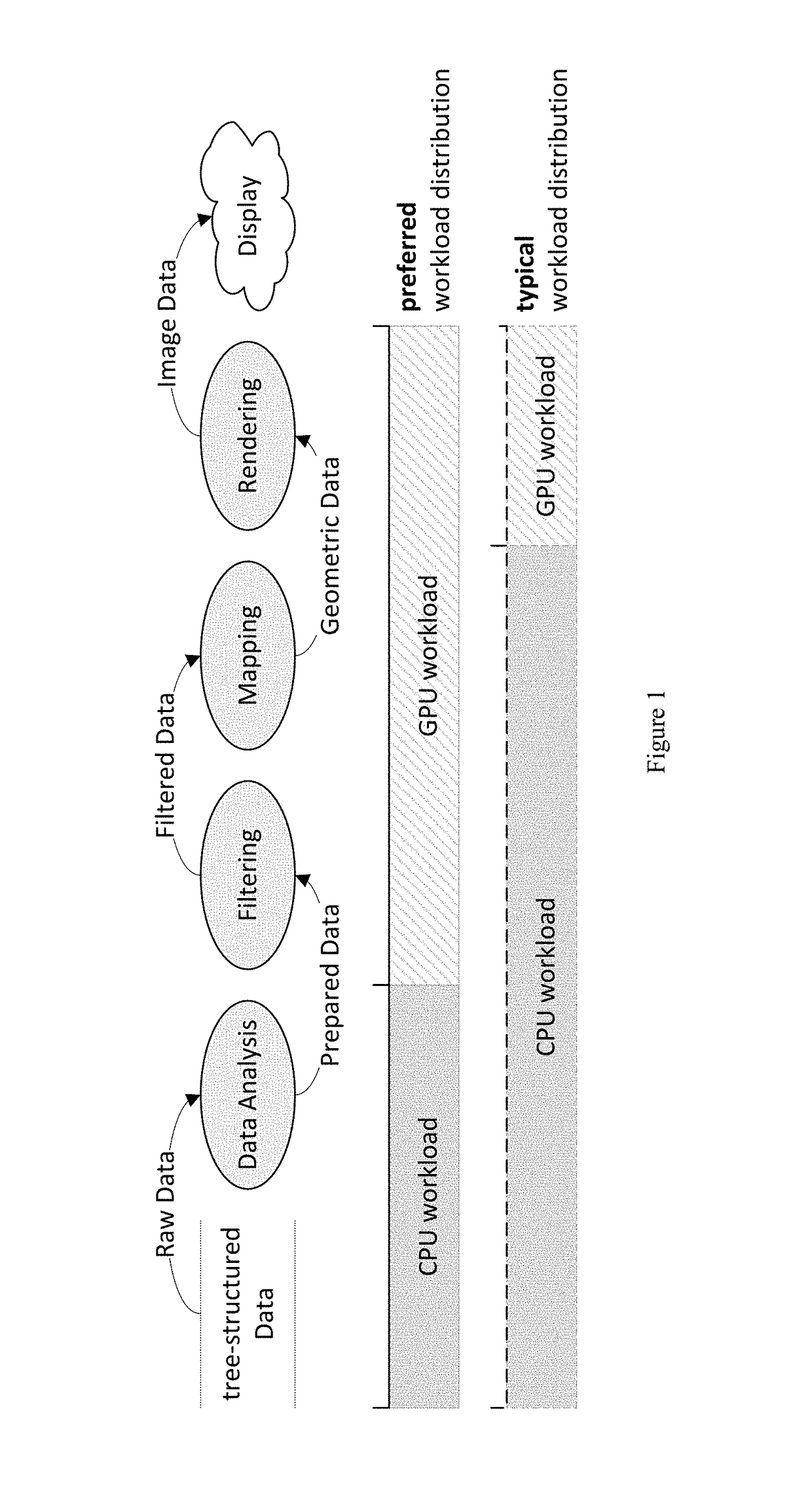Interactive, adaptive level-of-detail in 2.5D treemaps
a treemap and adaptive technology, applied in the field of interactive, adaptive level of detail in 2.5d treemaps, can solve the problems of reducing the pre-attentive perception qualities of color and height, occlusion of graphical elements, and increase rendering costs, so as to reduce the geometric complexity of the treemap, facilitate efficient identification of areas of interest, and reduce the visual clutter of the visual display
- Summary
- Abstract
- Description
- Claims
- Application Information
AI Technical Summary
Benefits of technology
Problems solved by technology
Method used
Image
Examples
embodiments
[0104]Within all embodiments, the methods and apparatus disclosed herein allow for more effective communication of and interaction with the relevant information, due to a reduction of the image data complexity for the visual display. Since the resulting depictions enable a varying local level-of-detail and level-of-abstraction they enable to guide an observer's attention towards regions-of-interest as well as individual nodes-of-interest within any displayed context. With it, the depicted information can be interactively and dynamically emphasized as well as attenuated based on its relevance at arbitrary (available) information resolution. Furthermore, the depictions can be visually adjusted for arbitrary image resolutions (based on the intended integration, e.g., small overview / thumbnail within a dashboard vs. exclusive display at max resolution), controlled by means of various user-interactions (e.g., eye tracking), and almost always improve rendering performance due to the decrea...
PUM
 Login to View More
Login to View More Abstract
Description
Claims
Application Information
 Login to View More
Login to View More - R&D
- Intellectual Property
- Life Sciences
- Materials
- Tech Scout
- Unparalleled Data Quality
- Higher Quality Content
- 60% Fewer Hallucinations
Browse by: Latest US Patents, China's latest patents, Technical Efficacy Thesaurus, Application Domain, Technology Topic, Popular Technical Reports.
© 2025 PatSnap. All rights reserved.Legal|Privacy policy|Modern Slavery Act Transparency Statement|Sitemap|About US| Contact US: help@patsnap.com



